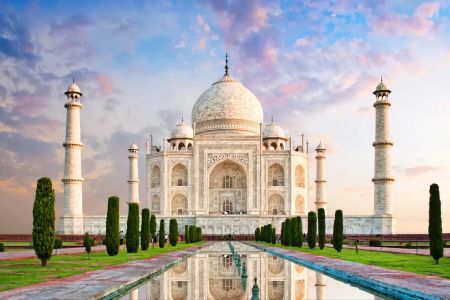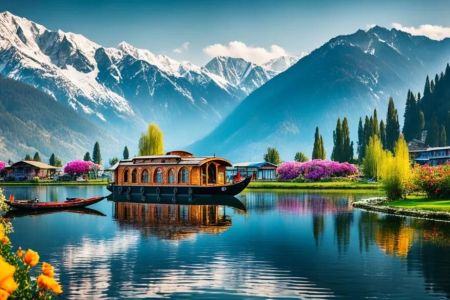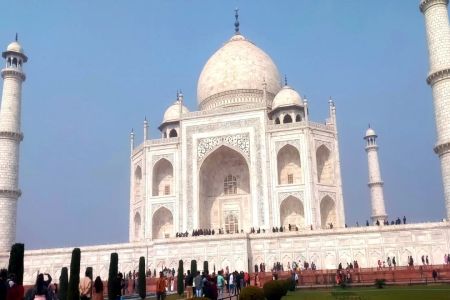How to Explore India’s Buddhist Sites: A Journey Through Spiritual Landmarks
1. Overview of India’s Buddhist Heritage
India, the birthplace of Buddhism, is home to an extraordinary collection of Buddhist sites that date back thousands of years. The journey through India’s Buddhist heritage offers a fascinating glimpse into the origins of one of the world’s most influential religions. From the sacred birthplace of Lord Buddha to revered pilgrimage spots like Bodh Gaya and Sarnath, exploring these sites provides a profound spiritual experience.
The Buddhist sites in India are not only religiously significant but are also remarkable for their architecture, history, and cultural importance. Visiting these sites offers a deeper understanding of the principles of Buddhism, as well as the impact this ancient tradition has had on Indian culture and beyond.
2. Top Buddhist Destinations to Visit in India
When planning to explore India’s Buddhist sites, several destinations stand out for their historical and spiritual significance. Here are some of the must-visit Buddhist destinations in India:
2.1 Bodh Gaya
Located in the state of Bihar, Bodh Gaya is the most revered Buddhist site in the world. It is where Siddhartha Gautama attained enlightenment under the Bodhi tree. Visitors can meditate in the tranquil surroundings of the Mahabodhi Temple complex, which houses the sacred Bodhi tree.
2.2 Sarnath
Sarnath, near Varanasi, is where Lord Buddha gave his first sermon after attaining enlightenment. The site is home to the famous Dhamek Stupa, as well as several other important monuments, such as the Sarnath Archaeological Museum, which showcases ancient Buddhist relics.
2.3 Lumbini
Though Lumbini is in Nepal, it is an essential part of any Buddhist pilgrimage tour in the region. Lumbini is the birthplace of Buddha, and the site houses the sacred Maya Devi Temple, marking the exact spot where Queen Maya gave birth to Siddhartha Gautama.
2.4 Ajanta and Ellora Caves
The Ajanta and Ellora caves in Maharashtra are remarkable examples of ancient Buddhist rock-cut architecture. The Ajanta caves, a UNESCO World Heritage site, feature stunning murals and sculptures that depict scenes from the life of Buddha and important events in Buddhist history.
3. A Pilgrimage Through India’s Sacred Buddhist Sites
A pilgrimage to India’s Buddhist sites is a transformative journey, offering opportunities for self-reflection and spiritual growth. The Buddhist pilgrimage route includes destinations such as Bodh Gaya, Sarnath, Lumbini, and Kushinagar. This route retraces the steps of Lord Buddha, from his birth to his final nirvana in Kushinagar.
For many pilgrims, traveling the Buddhist circuit is an intensely spiritual experience, offering moments of contemplation and deep personal connection. The sacred sites not only offer historical and religious insights but also provide a peaceful environment for reflection and meditation.
4. Travel Tips for Exploring India’s Buddhist Sites
Visiting India’s Buddhist sites can be an incredibly enriching experience, but it is essential to plan your trip carefully. Here are some helpful tips:
4.1 Plan Your Visit During Off-Peak Times
India’s Buddhist sites can become crowded during peak tourist seasons. To avoid the crowds and enjoy a more peaceful experience, consider visiting during the off-peak months, typically from April to September.
4.2 Respect Local Customs and Traditions
As Buddhist sites are sacred, it is important to dress modestly and behave respectfully while visiting these places. Be mindful of local customs, such as removing your shoes before entering temples and monasteries, and always ask for permission before taking photographs in sensitive areas.
4.3 Engage with Local Guides
Hiring a knowledgeable local guide can greatly enhance your experience at Buddhist sites. Guides offer valuable historical context, and they can help you understand the spiritual significance of the sites you are visiting.
5. Personal Stories from Travelers Exploring India’s Buddhist Sites
Many travelers share moving accounts of their journeys through India’s Buddhist sites. One traveler recounts the peaceful silence they felt while meditating under the Bodhi tree in Bodh Gaya, while another shares the emotional experience of visiting the site where Buddha delivered his first sermon in Sarnath.
These personal stories often reflect the profound spiritual impact these sites have on visitors. Whether seeking enlightenment, cultural enrichment, or simply a deeper connection with their spiritual self, exploring India’s Buddhist sites offers something for every traveler.











